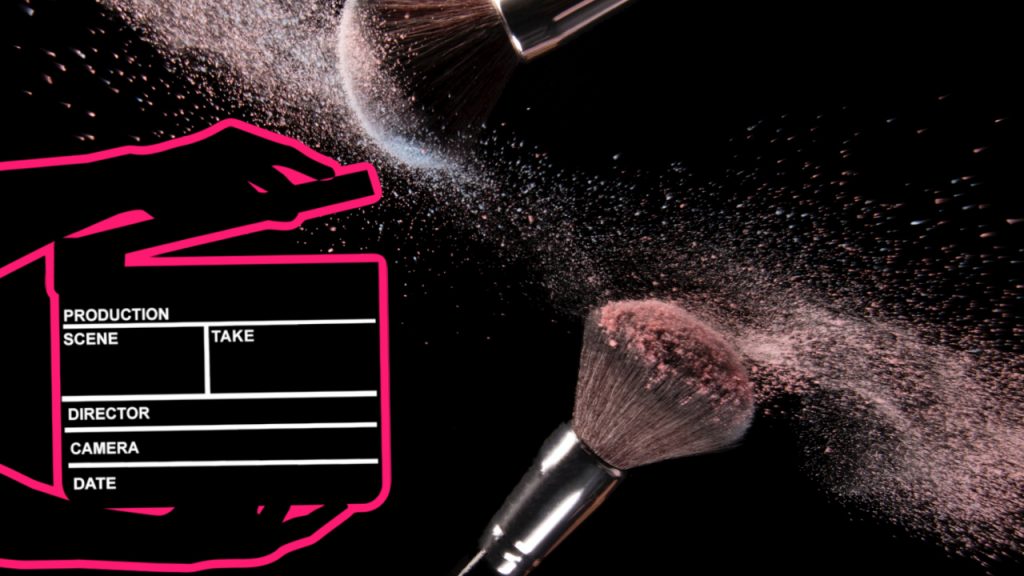From storyboarding to dramatic lighting, here’s what you need to know
It’s undoubtedly true that social media has made beauty (and content creation as a whole) entirely more democratic. You no longer need a spot on a TV show or a contract with glossy magazine to get yourself in front of an audience, just a smartphone.
It’s more than taking a picture with your iPhone on Portrait Mode. If you want your content to look slick, professional and put-together, bring in some pro techniques from the world of film and TV. Here’s what to consider when you’re ready to start rolling:
1. Start with storyboarding
Whether you’re doing a forty minute
get-ready-with-me style video or a simple two minute clip of an unexpected
beauty hack, you can benefit from storyboarding in advance. If you’re
collaborating with other creatives, it’ll ensure you’re all on the same page,
but even if you’re working alone, it’ll help you keep focus and give you a
sense of direction. You certainly don’t need to be a great artist to create one
– more than anything, it’s a simply visual representation of how you want the
content to flow and ensuring you know what your narrative’s going to be.
Crucially, it can stop you literally umming and aahing on camera – you’ll know
exactly what’s coming next, because you planned it.
For example, imagine a chef in a Michelin-star kitchen. They don’t walk in and
just wing it. They have all their ingredients prepped, chopped and peeled in
advance, within arm’s reach, and the pan is ripping hot by the time they step
in. It’s the same concept with storyboarding; map out your video, make sure you
have everything you need from the products you’re using to any set dressings
you want, think about the sequence you want it to follow and any key messaging
and you want to include.
Say it’s that forty minute get-ready-with-me video. Of course, you know you’re going to show a look from start to finish and so you’ll grab the products for that. But do any of the products you’re using have a particular story behind them, or did it take you a while to get the hang of using them? That’s useful detail – add it to the storyboard. Likewise, would any of the elements, say false lash application, benefit from a change in the shot to a close-up? Get set up for that. Is it a fairly complex look? Make sure you not only have the products you need for the look, but also makeup remover, cotton pads and a wipe-clean mat in reach for any snafus. It’s that simple.
2. Lighting is so important
Lighting can be make or break when it comes to creating content. On commercial or editorial photoshoots, there might be three or four people whose entire job is just the lighting. Obviously, you don’t need a full-blown team of your own (nor do you need to be aiming for that kind of production quality – homegrown can set you apart), but it’s worth understanding the basics.
Your ideal, pie-in-the-sky filming conditions for beauty will usually be good, natural light: think a clear sunny day in a room with floor to ceiling windows. Of course, if you’re fitting in filming around other commitments, you might not be able to shoot during daylight hours, or the skies may simply not cooperate with your wishes. Invest in a few bits of kit to circumvent that: a ring light is a must for beauty, and a softbox and reflector are useful, too. Ring lights are often referred to as “beauty lights” for the flattering wash of light they provide, minimising shadow and enhancing radiance. You can get super cheap ones that clip over the lens of your smartphone, but if you’re serious about creating content, investing in a free-standing, larger ring light is well worth it – expect to pay between £50 to £150 depending on any add-ons you want.
A softbox is basically a step up from that. Essentially, it provides a continuous burst of diffused light to soften and prettify things. If a ring light is best suited for selfie-style filming, a softbox is for larger-scale filming, like a group, or maybe a tutorial that uses more than just your head and shoulders. A reflector is a large, floppy circle of foil-like fabric that you can use to bounce the light around if you’re shooting somewhere gloomy and shadowy. If you’ve had your passport photo taken in a store, they might have asked you to hold one on your lap – this is to displace the shadow and control the light, which also helps minimise shine.
3. Think about your props
Finally, think about where you’re
filming. It sounds simple but give the area a tidy-up beforehand and move
anything that could be distracting, like laundry or mess or even any really
out-there artwork. You want the focus to be on you and you alone, so do
yourself a favour and make sure your set reflects you. In an ideal world, you
could carve out a nook or corner of your home or office as a designated filming
space 24/7, but if that’s not possible, have some big crates nearby that you
can knock any mess into before you start filming.
Likewise, think about what you can add to the background to make the space more
inviting. Maybe a few cushions or candles or plants – just little touches to
avoid it looking clinical and instead, looking homely and natural. Any props
you do add can be called “set dressing”, and you can use these to great effect.
If you’re filming with a particular brand of makeup, maybe you can add some of their packaging to the table, or chic piles of cotton rounds and tissues. Small touches like this can really up the aesthetic level of your content and make it look miles more polished.







